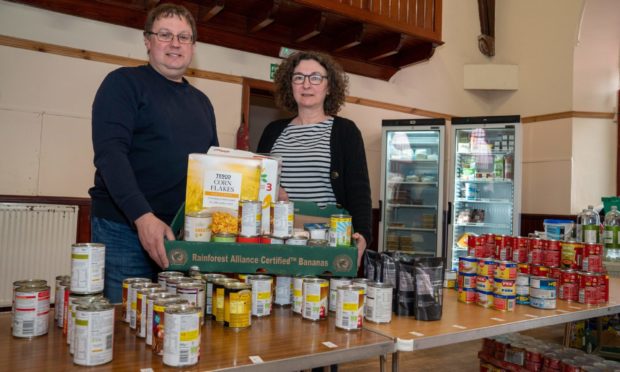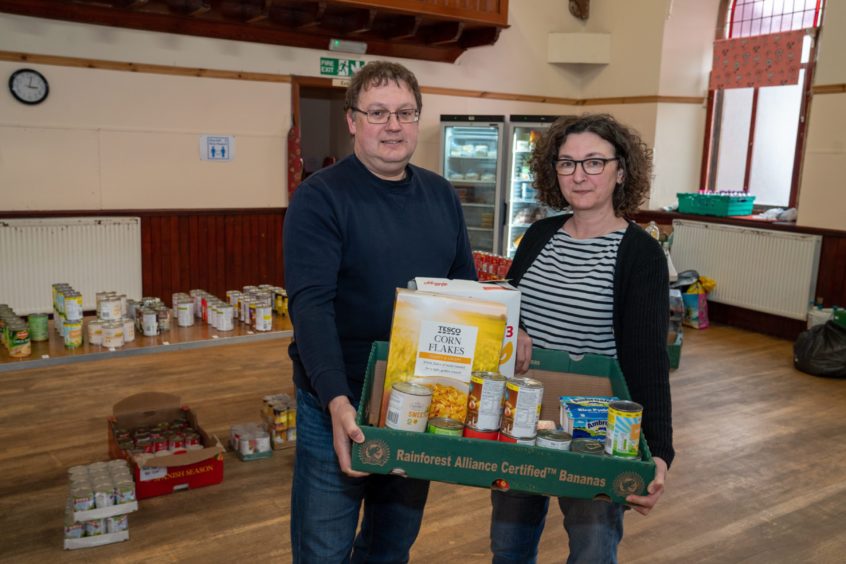The gap between the rich and poor in East Perthshire is bigger than in London, welfare workers have said.
A surge in foodbank usage and the low-income seasonal work in Blairgowrie and the Glens has contributed to rural poverty, a new report has shown.
Concerns were raised over unemployment, fuel poverty and a lack of services due to centralisation
The study by the University of Newcastle, Impact Hub Inverness and Scotland’s Rural College found found that the welfare system is not well adapted to rural life and that much rural work “is not good work”.
‘Very rich people and people just below zero’
Workers on the frontline of the welfare system in Blairgowrie claimed they had witnessed a bigger disparity between the rich and poor in the Perthshire town than they had found in London.
To protect identities, the report termed those working in services as ‘gatekeepers’ while also utilising focus groups from the area.
One gatekeeper said: “My worst benefit cases, and the level of poverty in Blairgowrie particularly, was really dramatic in comparison to all the other areas I’ve previously worked in, including London.
“This is the first time I have seen such a dramatic difference between really, really very rich people and people just below zero.”
The study claims that in Blairgowrie and the Glens tourism is “less dominant” than in other areas of Perthshire and fewer people are now employed in the previously buoyant soft fruit, textiles and manufacturing industries.
Due to these factors a growing number of people commute to work out of the area.
‘Only 50% have an email address’
Lack of broadband and internet access was also seen as a continuing problem.
A gatekeeper explained: “Digital exclusion is an issue far and wide again.
“Only 50% of our clients have an email address.
“That’s before you take into account issues with broadband and connectivity but actually just having access to those devices is a large problem.
“(Things are) centralised in Perth and Kinross, unless people or agencies and organisations are going out there doing things on a remote basis.”
In Perth and Kinross, 24% of addresses don’t have superfast broadband available, compared to the average of 13% in Scotland.
Lead researcher Professor Mark Shucksmith, from Newcastle University, said: “There is poverty in rural as well as urban Britain that national policymakers are not addressing adequately.
“There is a real opportunity for rural proofing of policy but it’s crucial that this involves rural stakeholders who have this local understanding.”
Rural poverty in the pandemic
Some focus groups believe that the Covid-19 pandemic helped “hidden rural poverty” to be recognised at a local authority level.
Welfare claims had been spread evenly across Perth and Kinross before the pandemic but by May 2020 more than half (56%) came from rural wards.
The study states: “The lockdown delivered a huge shock to rural economies and societies, most obviously through the temporary closure of many businesses – some permanently – and the loss of earnings to employees, self-employed and freelance workers.
“In our study areas, the large tourism and hospitality sectors were – and continue to be – particularly hard hit, the more so since so many staff had insecure, casual or seasonal work with zero hours contracts common in tourism, hospitality and retail.
“Some workers – including EU workers – also lost the homes which went with their insecure jobs.”
Community initiatives
Stemming from the increase in people finding themselves unemployed or struggling financially due to the pandemic, communities began to set up their own initiatives to help.
Steve Johnson and Lesley McDonald set up the Blairgowrie, Rattray Independent (BaRI) Food Project to help in their local area.
The duo constructed community larders and also a subsidised shop. Another aspect of rural poverty highlighted in the report was the stigma of receiving benefits in small close-knit communities.
Lesley said: “We just felt that there was going to be an awful lot of people unemployed.
“These were people that were used to working.
“We set up outreach larders where people could go for food.
“We have volunteers looking after them every single day.
“We decided during the first lockdown that or aim was to provide a subsidised service.
“That people didn’t just have the option of the foodbank or benefits or nothing.”
Steve said they had received requests for support from employees working in fields highlighted in the report, like tourism.
“We’ve filled out requests from people that worked at hotels that had been furloughed,” he said.
“We also knew that Rattray was known as an area of deprivation.”
Steve and Leslie said it was the pandemic that inspired them to set up the food project but that it would continue after it.
They now want to highlight the issues around food waste and food education.
Lesley said: “One of the first nights we collected from the three supermarkets and fully stocked the four larders.
“All of that food was gone within one hour.
“That is food that would have been in the bin.”

